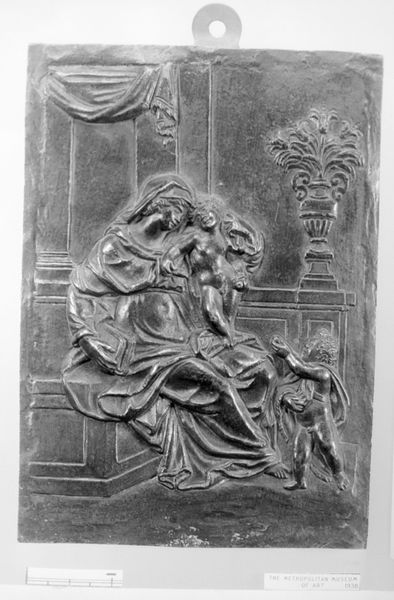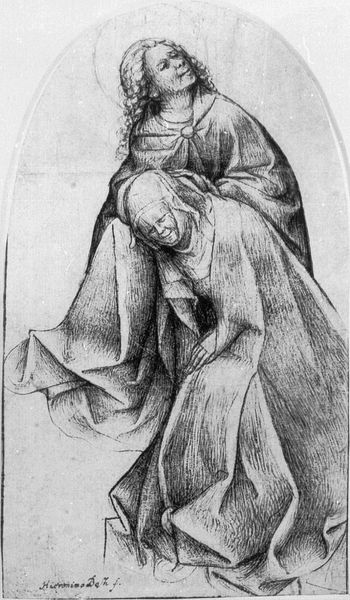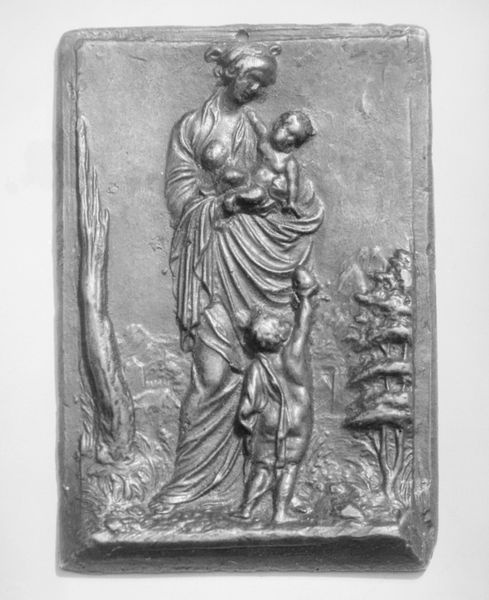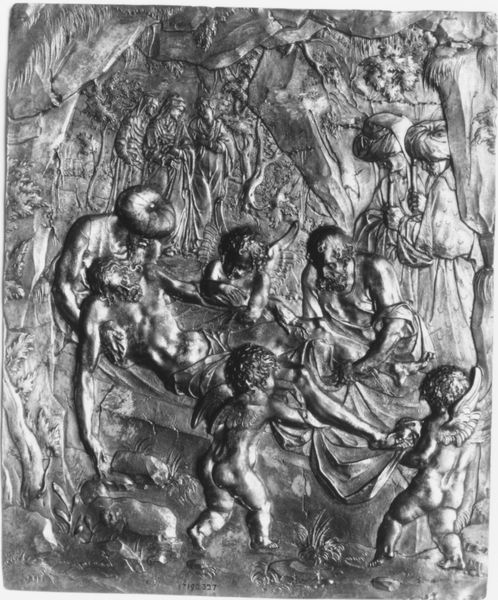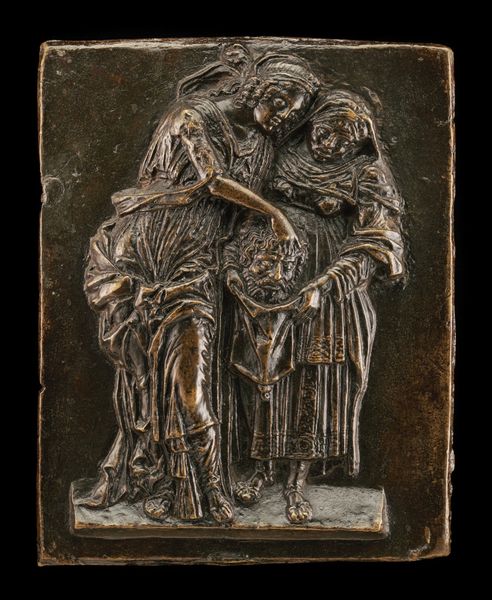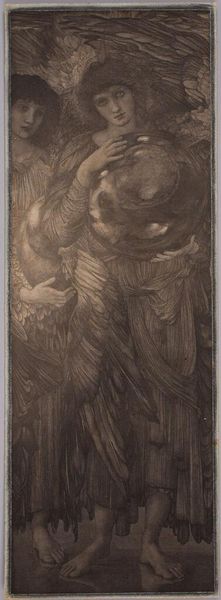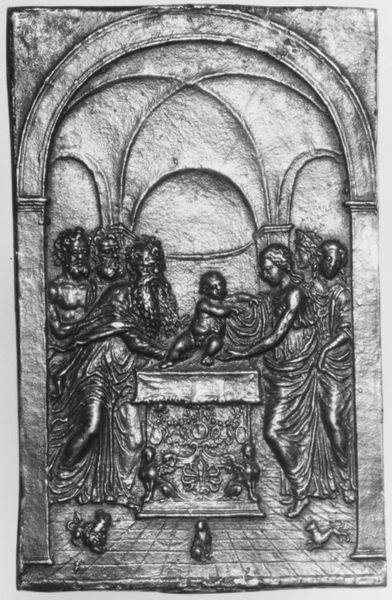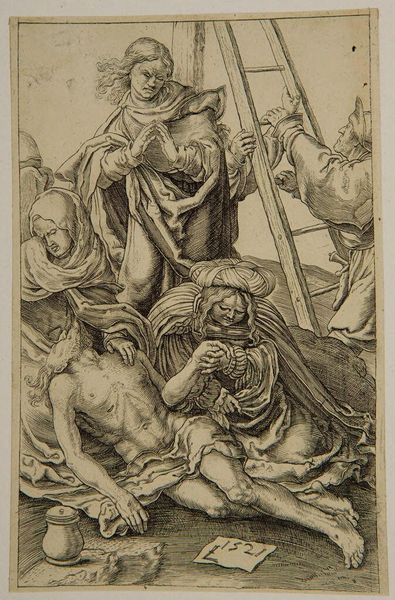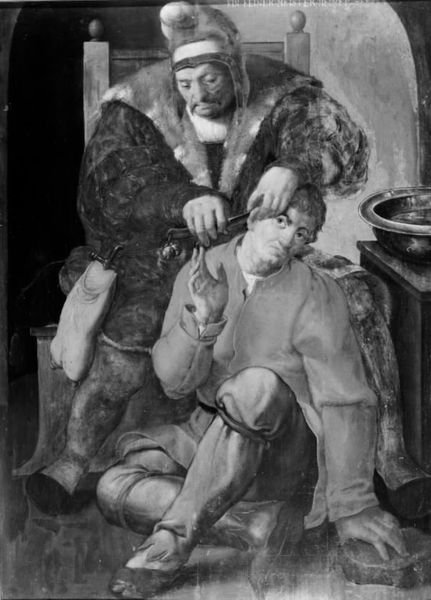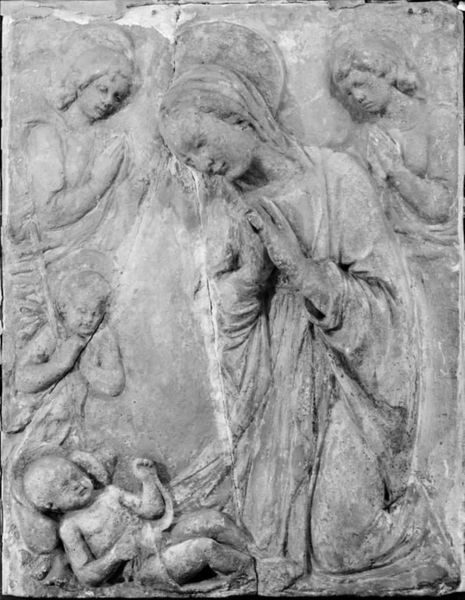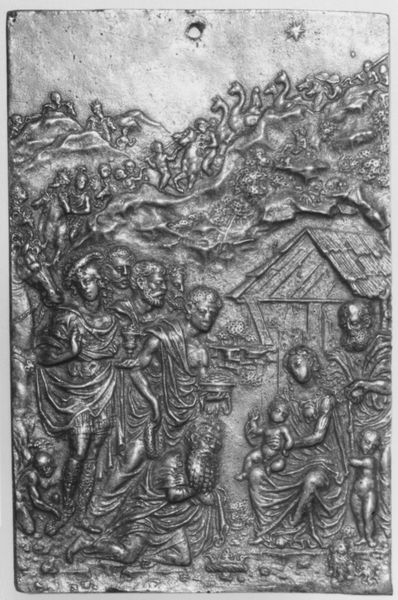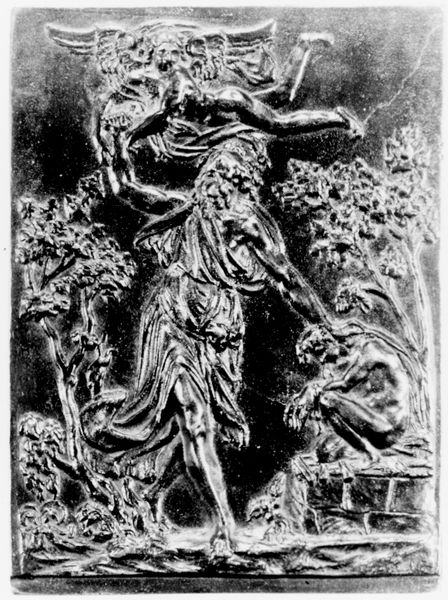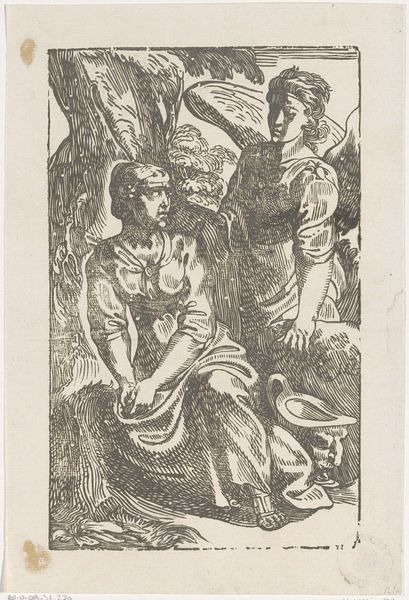
Judith with the Head of Holofernes 16th century
0:00
0:00
relief, bronze, sculpture
#
narrative-art
#
relief
#
bronze
#
figuration
#
sculpture
#
history-painting
#
decorative-art
#
italian-renaissance
Dimensions: 4 1/8 × 3 3/16 in. (10.5 × 8.1 cm)
Copyright: Public Domain
Curator: Okay, let’s spend some time examining this bronze relief panel, "Judith with the Head of Holofernes." Andrea Briosco, known as Riccio, created this piece sometime in the 16th century. It's currently part of the collection here at the Metropolitan Museum. Editor: My immediate reaction is a curious mix of drama and restraint. Even though it’s bronze and quite rigid, it has this really intense stillness. A rather heavy narrative being carried with careful elegance. Curator: Absolutely. Riccio's genius lies in compressing such a weighty story— Judith's assassination of Holofernes —into a single, powerful image. Think about what Judith symbolizes: defiance against tyranny, female courage…it's potent stuff. Editor: The lighting, even in the rendering, emphasizes the intimacy of this act. See how their faces almost huddle together, almost conspiratorially. Holofernes' head is gruesome, yes, but almost secondary. It’s all about Judith's gaze, the face of the old servant too... both speak volumes without any explicit violence displayed, which feels rather refined for the subject matter. Curator: The story of Judith has resonated for centuries, embodying themes of liberation and divine intervention, so an approach that elicits deeper reflection, without sensationalism, adds gravity. It serves not only as an interpretation of history but an echo through time. The figures depicted are a part of a story bigger than the panel, but it's held and symbolized beautifully by these women. Editor: And to do this in bronze, right? This enduring material immortalizing a transient, yet powerfully resonating moment. It’s an amazing counterpoint: fleeting action given solid, lasting form. Makes you think about how memory works, and how we solidify stories into archetypes. Curator: A wonderful observation. And consider too the decorative elements. The elaborate costumes contrast with the gravity of the moment, reminding us of the layers of meaning that can exist even within acts of violence, suggesting beauty and even art, if that can be imagined, have a presence no matter how severe a reality we witness. Editor: Well, spending this time really reshaped my initial read, it initially gave the appearance of calm strength. Looking closer, that's still there, with added layers of human resolve... but also reflection... of duty, and consequences. Curator: Yes, a true Renaissance masterpiece that continues to speak to us across time. Thank you for adding depth to the conversation!
Comments
No comments
Be the first to comment and join the conversation on the ultimate creative platform.
